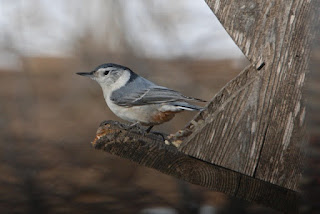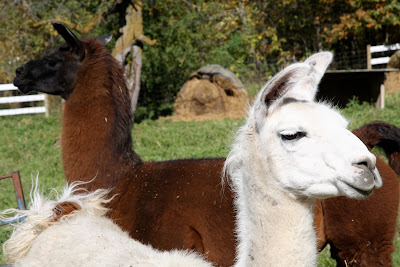by Andy
Life is funny. I never thought I would be farmer nor did I ever envision myself as an educator. Together with the question of “why do we have a farm?” I might also ask myself: “why am I here on this farm at this time?” It is not because I was a true Montessori believer and wanted to take the next step, nor is it because I was raised on a farm. If pushed, I might say that it was a deep desire to live a life of meaning in the service of others that led me to this place and time. The sense of individual and collective purpose that I feel is also the indirect aim of a Montessori Adolescent education for our young people. Although I got there without ever going to a Montessori farm school, I am starting to see why a farm school might be the ideal environment to foster that kind of maturity.
I am not a Montessori insider, and as a person who was recruited into Montessori education, I will always have a little bit of a skeptical outsider’s view. I developed my own sense of purpose and love of learning in good old regular public school. So my questions are: what is the problem with regular school? And specifically what about a Montessori farm school fixes the problem?
I recently attended a workshop in Long Beach California called The Sixth Adolescent Colloquium. The organizers brought together many of the foremost thinkers and practitioners in the relatively new Montessori Adolescent movement. The workshop was a long look at something called the “Educational Syllabus,” which was part of Maria Montessori’s “Erdkinder” essay on adolescent education. Each of the speakers took on a different part of the syllabus. The speakers kept reminding us that the Educational Syllabus in the Erdkinder essay does not resemble a syllabus as we normally think of it. We normally think of a syllabus a prescription for what to teach, or (from the student’s perspective) as a chronological list of the information that will be coming in the class. The Montessori syllabus is something completely different. Rather than a list to be checked off, it is a framework for looking at education in general, a sort of lens which brings elements into focus. As with most Montessori insights, the Syllabus completely sidesteps the assumptions behind “regular” school.
The essence of the Montessori framework is not in the “what?” of education, but rather it is in the “why?” The idea is to replace a mechanistic model of education, where knowledge is thought of as little bits that need to be added to the student as he or she moves along the assembly line. In the mechanistic model, the nature of the little bits is very important, because the acquisition of the correct bits is how we test the efficacy of the education. A cynic might say that the perfect outcome for modern education would be for the student to remember and recapitulate all of the bits in return for an external reward. To look at the Montessori Educational Syllabus is to realize that she is not making a list of bits to be inserted into the student’s brain, but rather she is thinking about what kind of education will meet the needs of the student and the planet. This is the “why?” part.
The specific needs of the adolescence can all be framed in terms of social life. This is a time when the young person is seeking answers to the questions like: “who am I?”, “How do I fit in?”, and “what is my great work, my contribution to society?” The Montessori Educational Syllabus seeks to define a plan of study in an environment that helps the young person experience intentional social life as an initiation into adult society. The plan is divided into three sections:
- Self Expression. – music, language and art
- Psychic Development – moral education, mathematics, language
- Preparation for Adult Life –
- study of the earth and living things,
- the study of human progress and the building up of civilization,
- and the study of the history of humanity.
Our presenters noted that the above can look like a list of bits to be learned, but it is much more than that; it is a way of thinking about maturity.
In looking at Self-Expression we think of maturity as coming to know oneself. One of our presenters, Laurie Ewert-Krocker, described the process of writing a poem as having to make a deliberate choice of words from the thousands of possibilities, and then putting them together in a deliberate way from the thousands of possible ways. She said that in the very act of choosing during a creative act, the young person is also indirectly choosing who they are and who they will be in the world. The creative act of painting or writing is also an act of self-construction and self-discovery. Self-Expression provides a structure and space for something that is inside of the young person to come out and develop.
In the section on Psychic Development, we are reminded that in Montessori’s vernacular, she is talking about character formation and moral development. Our organizer, David Kahn, noted that if we think of Self-Expression as something inside wanting to come out, then Psychic Development is something that is outside that wants to come in. The morals necessary to make a contribution in society cannot be learned vicariously. The social self and the moral self must tangle with real issues in a real forum called a “just community.” Let’s look at a few quotes to get the flavor.
“This is the time, the sensitive period when there should develop the most noble characteristics that would prepare a man to be social, that is to say, a sense of justice and a sense of personal dignity.” From Childhood to Adolescence, Maria Montessori.
“For success in life depends in every case on self-confidence, and the knowledge of one’s own capacity and many sided powers of adaptation. The consciousness of knowing how to make oneself useful, how to help mankind in many ways, fills the soul with noble confidence, with almost religious dignity.” From Childhood to Adolescence
“Today, however, it is not by philosophizing, not by discussing metaphysical conceptions that the morals of mankind can be developed: it is by activity, by experience, and by action” From Childhood to Adolescence
Now if we also look at Mathematics and Language from the point of view of morality and character development, they both take on a new significance. It is about being literate in the way information is presented in the world in order to understand things enough to know the degree to which some action is just or noble. One of our presenters, Pat Luddick, noted that interaction with real life and literacy in math and language brings us to a non-dualistic sense of morality, which takes things as they come in all their nuances.
As the conference moved into the third part of the Syllabus, we were prepared to view the section on Preparation for Adult Life through the Montessori lens of character formation. We could see that the Study of the Earth and Living Things is not to gain bits of information, but rather to inform real life decisions. An example was teacher Jacqui Miller's curriculum on the study of a watershed near her Atlanta school. The scientific discoveries of the students spurred them to pursue changes in their school and in their lives. If you do not know your specific place, then you will not make informed choices in the “just community,” wherever you live.
Linda Davis made a strong case for the specific place to encounter nature to be a farm. She said it is because the farm is both nature and “supernature,” built from nature by humans. Supernature is foundation of the civilization we live in today, and the farm embodies this tension between the natural world and the constructed world. If you walk on a farm that is ill kept, it is an in-your-face reminder of what happens when humans do not care and take responsibility. You can’t cheat on the farm, because the results are right there. The farm forces us to face our responsibility to the natural world. In examining The Study of Human Progress and the Building Up of Civilization, our presenters often referred to Montessori’s concept of Supernature. We need to be literate in our scientific progress just as much as in the natural world, but in order to build character and morals, both literacies are to be rooted in real life decisions and choices in a real place.
In the section of the Syllabus on the Study of the History of Humanity, the nature and supernature are joined in the experience of the human connection between the two. Our presenter, Gina Englefried, challenged us to present something called experiential history. Adolescence is a self-centered stage of life (for better or for worse), and to come alive history must in some way help the young person locate him or herself in a specific time and place. The child is the maker of the man, and formation of the identity is not boring. It is through meaningful experience, community and work that identity is formed. The experience of history is to come into contact with heroes. These people are the way-showers and our presenter described how self-empowerment in the young person comes in reflection and transference. Again, the study of history is a stimulus to action and character formation, just like the study of nature and the study of technology. Just like nature and supernature, the human connection is best realized in the interaction with real life.
Here’s the rub: in order for us as a planet to experience peace and harmony with each other and the environment, we need heroic individuals, each with a strong moral compass and a sense of his or her own almost limitless abilities. That moral compass and consciousness of one’s capacity is best attained through real experiences of social life. According to Montessori, “One cannot awaken the conscience by talking about it.” The farm in this context is a laboratory to experience real social life away from the family. It is a place to come to a sense of one’s abilities through real meaningful work. It is a place to experience the consequences of one’s actions on a literal field which acts a mirror for the self. It is a place to connect viscerally with nature and with the ways that humans have used science and technology to create a layer on top of nature. The farm is a physical place to connect with and influence the history of one specific place, which will lead to a connection with the whole of human history. More than that, it is a specific place to love and value, and through that love of one place, to expand to love and value all places.
In the end our organizer stated emphatically that you do not need a farm to have a Montessori Adolescent program. He said that a program can be true to the Syllabus without a farm, but also that the farm does offer much that is built-in that works the Practical Considerations of the Syllabus. There are many pathways to maturity and moral development, and a farm school is a good one.












































